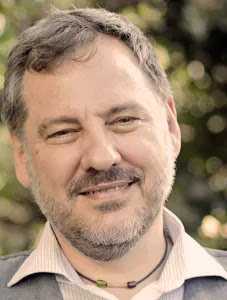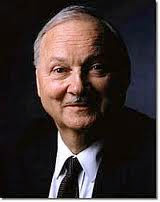Guest blog: Ensuring our Survival through South-South and Triangular Cooperation
Guest blog by Adam Rogers: has worked for the United Nations for the past 20 years, and is currently a senior advisor with the Development Impact Group within the UN Development Programme. Until recently he served as the Regional Representative for Europe for the United Nations Office for South-South Cooperation, as well as the coordinator for the World Alliance of Cities Against Poverty --a network of more than 900 cities that are committed to the cause of advancing human development within the urban context.
The UN is getting ready for its annual showcasing of innovations from developing countries, with the intention of scaling them up
The strategic intent of what is today known as South-South cooperation is to accelerate progress on the Sustainable Development Goals through greater cooperation among countries of the South.
The “South”?
The South, or the Global South, is a term used to refer to those countries challenged by elevated levels of poverty. When looking at the commonly used Mercator projection map of the 16th century, most of these countries are located below the rich countries and thus occupy a region of the South. Incidentally, the word South and Southern are capitalized in this context because they refer to a geographic region (like North Africa) and not to a direction on a compass.
While there are of course deep pockets of poverty in the relatively rich countries of the “North”, and of course a few rich countries “down-under” in the South, those who work with these issues have agreed to use the word “South” to describe the 80 percent of the planet that enjoys far fewer advantages than the privileged 20 percent.
South-South and triangular cooperation
The idea behind “South-South cooperation” is that when countries with common interests provide access to each other’s resources (through development assistance, loans or direct investments) technology, and/or knowledge, the net benefits can be symbiotic, generating employment across borders, and providing more tax revenue to be invested in public goods and services, thereby reducing poverty and improving livelihoods. In other words, SSC is when one country can benefit from another through successful initiatives with cross-border implications or from innovations (in policy or process) which have been replicated or upscaled across borders within the South.
When "Southern-driven" partnerships between two or more developing countries are supported, financially or otherwise by a developed country or even a multilateral organization like mine (the United Nations Development Programme), this is known as "triangular" cooperation.
Sustainable Development Goals
If you have not yet heard of the Sustainable Development Goals, let me quickly bring you up to speed: The SDGs, otherwise known as the Global Goals, are a universal call to action to end poverty, protect the planet and ensure that all people on Earth enjoy peace and prosperity before the year 2030. The 17 Goals build on the successes of the 2015 Millennium Development Goals, while including new areas such as climate change, economic inequality, innovation, sustainable consumption, peace and justice, and other priorities. The goals are all cross-cutting and interconnected – often the key to success on one will involve tackling issues commonly associated with another.
Showcasing, sharing and shopping for southern solutions
To help facilitate the sharing of resources, technology, and knowledge between developing countries of the Global South, the United Nations each year organizes a global expo. The Global South-South Development Expo (GSSD Expo) provides a powerful platform for all development actors and stakeholders to showcase Southern development solutions, to celebrate South-South cooperation success, to share knowledge and lessons learned, to explore new avenues for collaboration, and to initiate new partnership efforts to further advance this approach to development.
At the last South-South Expo in Dubai (October 2016) more 700 delegates from 91 countries joined 25 United Nations organizations and 124 other institutional partners to discuss, debate and deliberate upon how to take proven successes from one part of the world and to encourage their replication or upscaling elsewhere. At least 170 concrete Southern-grown development solutions and initiatives were presented.
The United Nations Office for South-South Cooperation is accepting applications for participants who either have a proven success to share, or who are looking for solutions. The event is filling up quickly so interested participants are encouraged to register online as soon as possible to avoid disappointment. More information and links to register are available at here .
The UN is getting ready for its annual showcasing of innovations from developing countries, with the intention of scaling them up
The strategic intent of what is today known as South-South cooperation is to accelerate progress on the Sustainable Development Goals through greater cooperation among countries of the South.
The “South”?
The South, or the Global South, is a term used to refer to those countries challenged by elevated levels of poverty. When looking at the commonly used Mercator projection map of the 16th century, most of these countries are located below the rich countries and thus occupy a region of the South. Incidentally, the word South and Southern are capitalized in this context because they refer to a geographic region (like North Africa) and not to a direction on a compass.
While there are of course deep pockets of poverty in the relatively rich countries of the “North”, and of course a few rich countries “down-under” in the South, those who work with these issues have agreed to use the word “South” to describe the 80 percent of the planet that enjoys far fewer advantages than the privileged 20 percent.
South-South and triangular cooperation
The idea behind “South-South cooperation” is that when countries with common interests provide access to each other’s resources (through development assistance, loans or direct investments) technology, and/or knowledge, the net benefits can be symbiotic, generating employment across borders, and providing more tax revenue to be invested in public goods and services, thereby reducing poverty and improving livelihoods. In other words, SSC is when one country can benefit from another through successful initiatives with cross-border implications or from innovations (in policy or process) which have been replicated or upscaled across borders within the South.
When "Southern-driven" partnerships between two or more developing countries are supported, financially or otherwise by a developed country or even a multilateral organization like mine (the United Nations Development Programme), this is known as "triangular" cooperation.
Sustainable Development Goals
If you have not yet heard of the Sustainable Development Goals, let me quickly bring you up to speed: The SDGs, otherwise known as the Global Goals, are a universal call to action to end poverty, protect the planet and ensure that all people on Earth enjoy peace and prosperity before the year 2030. The 17 Goals build on the successes of the 2015 Millennium Development Goals, while including new areas such as climate change, economic inequality, innovation, sustainable consumption, peace and justice, and other priorities. The goals are all cross-cutting and interconnected – often the key to success on one will involve tackling issues commonly associated with another.
Showcasing, sharing and shopping for southern solutions
To help facilitate the sharing of resources, technology, and knowledge between developing countries of the Global South, the United Nations each year organizes a global expo. The Global South-South Development Expo (GSSD Expo) provides a powerful platform for all development actors and stakeholders to showcase Southern development solutions, to celebrate South-South cooperation success, to share knowledge and lessons learned, to explore new avenues for collaboration, and to initiate new partnership efforts to further advance this approach to development.
At the last South-South Expo in Dubai (October 2016) more 700 delegates from 91 countries joined 25 United Nations organizations and 124 other institutional partners to discuss, debate and deliberate upon how to take proven successes from one part of the world and to encourage their replication or upscaling elsewhere. At least 170 concrete Southern-grown development solutions and initiatives were presented.
The United Nations Office for South-South Cooperation is accepting applications for participants who either have a proven success to share, or who are looking for solutions. The event is filling up quickly so interested participants are encouraged to register online as soon as possible to avoid disappointment. More information and links to register are available at here .





Comments
Post a Comment